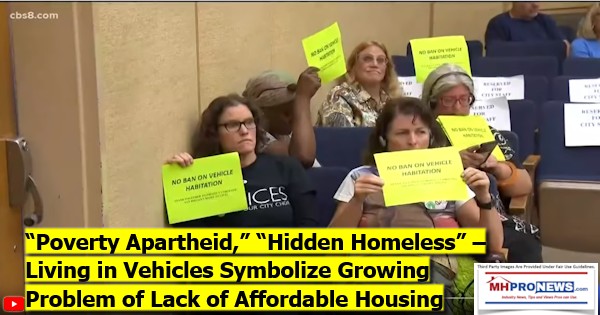
The quotes above are pulled from the videos below. They spotlight the tension and a growing awareness of the problem of not only the homeless living in cardboard boxes, tents, or on the street. But there are also the ‘hidden homeless’ who are living for an extended period of time in vehicles.
KOMO’s viral “Seattle is Dying” report spotlighted an issue that has been spreading for years. For those who’ve missed it, see the report linked below, which includes the video, and the manufactured home perspective on this issue
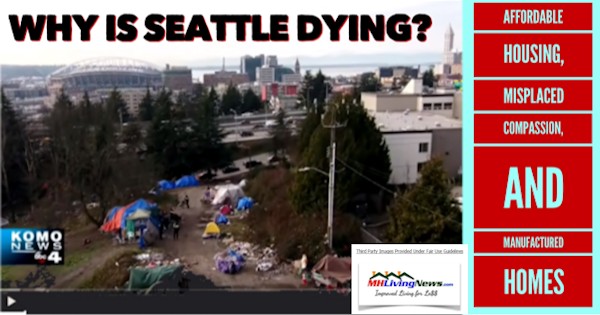
An aspect of the over 550,000 which Department of Housing and Urban Development (HUD) statistics say are homeless in America is the growing numbers who are living in vehicles. The videos illustrate the problem.
The video reports from Seattle and San Jose, above and below, provide a flavor for how this is playing out in several cities.
Symptoms of a Broader Problem?
These tragic-but-true tales of vehicular homelessness are arguably symptoms of the underlying problem of perhaps well intended, but nevertheless mistaken public policies and NIMBYism.
There is a clear need for affordable housing that is located as near as possible where people work. The lack of affordable housing, per National Bureau of Economic Research (NBER) researchers cited in the article linked below, costs the nation an estimated $2 trillion dollars annually in lost economic activity.
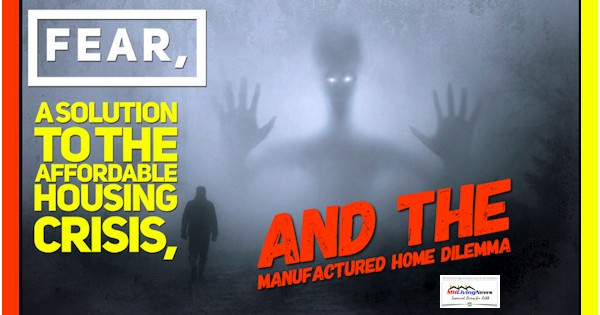
While manufactured homes aren’t going to be the solution to each and every such scenario, wherever there are vacant lots – infill or potentially available for development for affordable homes – the HUD Code industry’s form of factory-building could prove to be a crucial option for millions who are not able to afford conventional housing. Industry advocates, professionals, investors, and others need to grasp and share such information in order to highlight how manufactured homes are not a problem, but rather a solution that has proven its value. Who says? Decades of third-party, academic research.

The industry’s professionals and investors can be part of the solution by taking pro-active steps. Bad policies, special interests, and NIMBYism foster these sad spectacles of people pushed to the streets or vehicles. Good policies, which ideally includes education, can be the cure. More affordable housing is needed. The most proven permanent form of affordable housing are manufactured homes. See the related reports for more information.
That’s “News through the lens of manufactured homes, and factory-built housing” © where “We Provide, You Decide.” © ## (News, analysis, and commentary.)
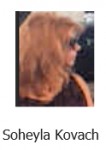
Soheyla is a managing member of LifeStyle Factory Homes, LLC, the parent company to MHProNews, and MHLivingNews.com.
Connect with us on LinkedIn here and here.
Related Reports:
Click the image/text box below to access relevant, related information.
5 Fastest Growing Suburbs, But Housing Report Signals Shift, New Woes
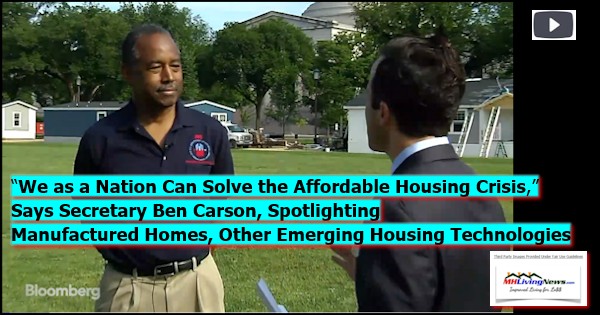
Senator Kamala Harris, Amazon, PreFabs, and Manufactured Housing – “ForgetAboutIt…”
President Trump Mulls Federal Action Intervening on Homeless Crisis in U.S. Cities
MHARR Cautions Congress on Two Unnecessary And Damaging Manufactured Home Bills | Manufactured Housing Association Regulatory Reform
Washington, D.C., July 1, 2019 – The Manufactured Housing Association for Regulatory Reform (MHARR) in a June 26, 2019 communication to both houses of Congress (copies attached), has called on legislators to take no action on pending proposed bills that are at best unnecessary and, at worst, harmful and damaging to both the mainstream HUD Code manufactured housing industry and the lower and moderate-income American families that rely on those homes for affordable homeownership.
White House Announces Council on Eliminating Regulatory Barriers To Affordable Housing | Manufactured Housing Association Regulatory Reform
MHARR participated in a conference call on June 25, 2019, conducted by the U.S. Department of Housing and Urban Development (HUD), during which White House officials announced the impending issuance of an Executive Order (EO) to create a “White House Council on Eliminating Regulatory Barriers to Affordable Housing.”

























